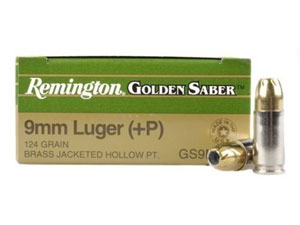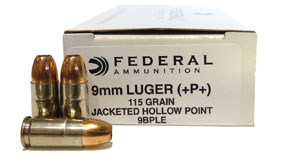AMMO: what is +P and +P+
+P and +P+ ammo usually refers to self defense ammo that is loaded extra "hot" in order to achieve higher velocity. The downside to these loads is increased recoil and additional muzzle flash. These can be counteracted buy using a lighter bullet and gun powder that has a "flash suppressant."
+P and +P+ loads are produced by nearly all ammo manufacturers leveraging hollow point bullets and the projectile of choice.
All ammunition is assigned a SAAMI rating. The Sporting Arms and Ammunition Manufacturers' Institute has long been regarded as the experts on small arms ammunition specification. All reloading manuals will cite SAAMI specs for each caliber. It is important to know that both +P and +P+ loads will be marked as such on the rear of the case.

A + P load is X percent higher than the SAAMI suggested load. Where is X is a value between 9% and 96% depending on caliber. It is important to know that while the +P and +P+ load exceeds the SAAMI standard pressure values, it does not exceed the absolute safe value commonly known as a "proof round." A proof round is the ceiling number which should NEVER be exceeded under any circumstances.
A +P+ load is X percent higher than a +P load. SAAMI does not publish +P+ loads and therefore they are developed by each ammunition manufacturer. Again +P+ does not exceed the proof round.
Let's use 9mm as an example. Standard pressure SAAMI loads are 35,000 PSI while +P pressure is 38,500. Load data for +P+ is no specified by SAAMI, but the proof round value is 45,700 PSI. By deductive reasoning we can estimate a +P+ load of 42,000 PSI.
So you may be thinking, okay these loads are made by just increasing the amount of gun powder. Not entirely. Of course more powder is used to achieve higher velocity. However, there are several other factors which go into creating these loads:
- Bullet choice
- Bullet seating depth
- Primers
- Crimp
As mentioned before the weight and design of the bullet also plays a role in velocity and powder charge. Generally speaking, a heavier bullet requires less powder. It also generates more recoil. A lighter bullet generates less recoil, but requires more powder. So it's a balancing act depending on the velocity requirements. Look at the boxes of ammo in this article. You will notice the +P+ load uses a lighter bullet (115 grain) while the +P uses a heavier one (124 grain).
Bullet seating depth is a fairly easy way to increase or decrease the amount of pressure in a cartridge. Even very small differences (thousands of a inch) can yield significant results.
Primers must be chosen carefully as the additional pressure increases the possibility of blowing primers from the rear of the case. Match primers and rifle primers have a stronger cup to ensure they stay seated in the cartridge once fired.
Bullet crimp is performed right after the bullet is seated. It also a way to regulate cartridge pressure although we see more emphasis on crimp in rifle rounds.
It's important to know that not every gun is compatible with +P+ or even just +P. You should always check your owners manual or manufacturer before shooting it. If fired in a gun not compatible you may wear the gun out very quickly thereby damaging internal parts. In extreme cases you can blow the barrel, breech, and frame apart (see this video). Generally, the +P restriction is seen in compact guns or low quality firearms.
If you are using a full size and/or quality pistol you should be fine shooting +P. My HK USP-SD has a "tactical" recoil spring designed to handle additional pressure from shooting suppressed. It has no problems shooting +P or even +P+ ammo. In fact, some guns like the HK Mark 23 were specifically designed for +P ammo.
 06/18/14 09:00:00 am,
06/18/14 09:00:00 am,